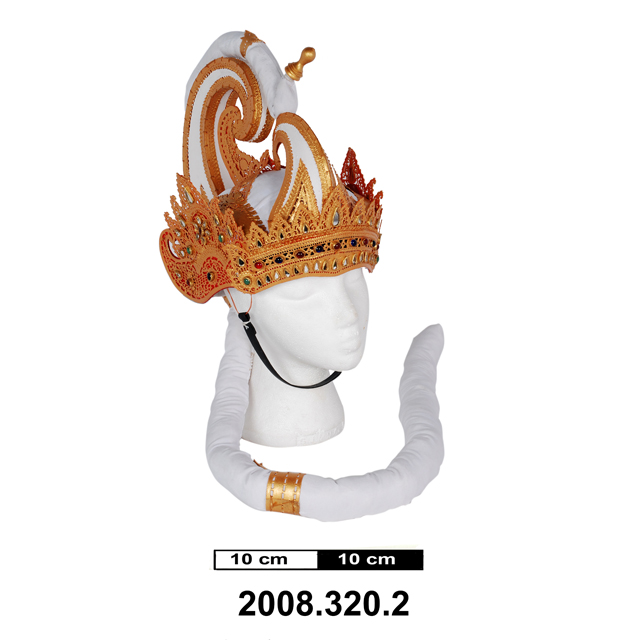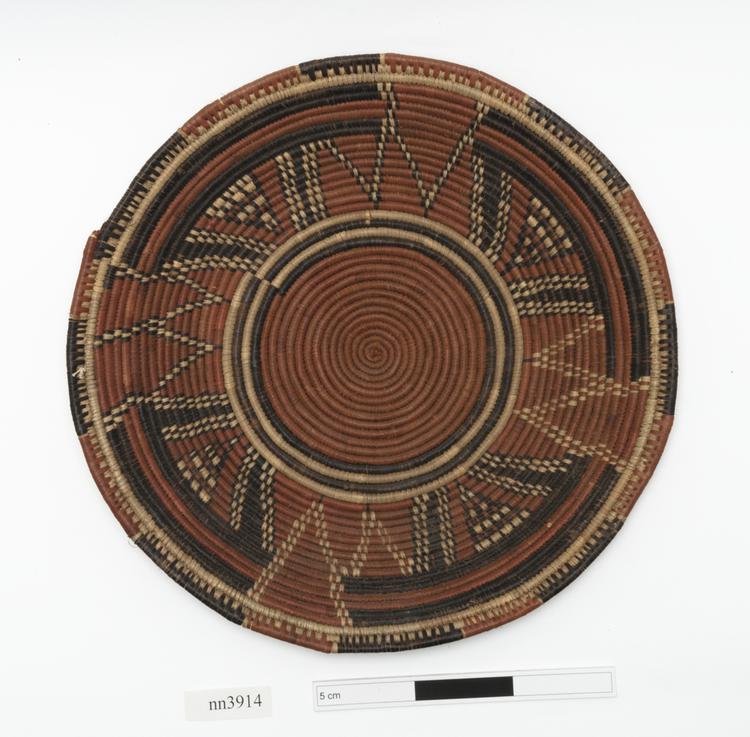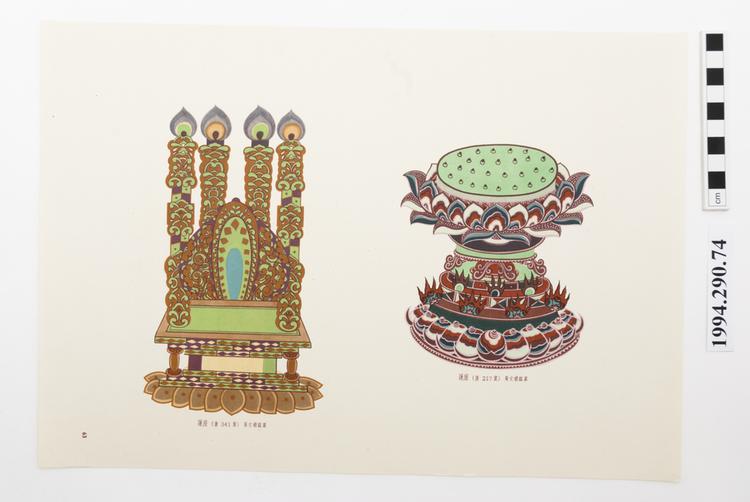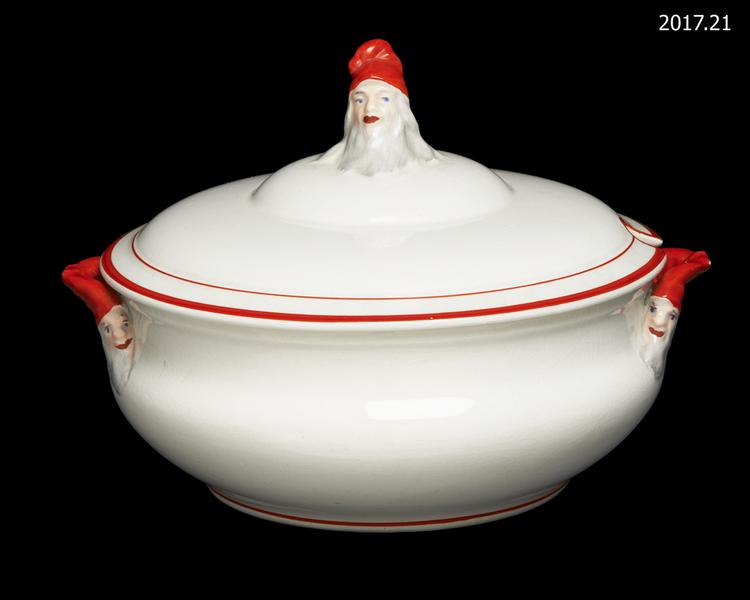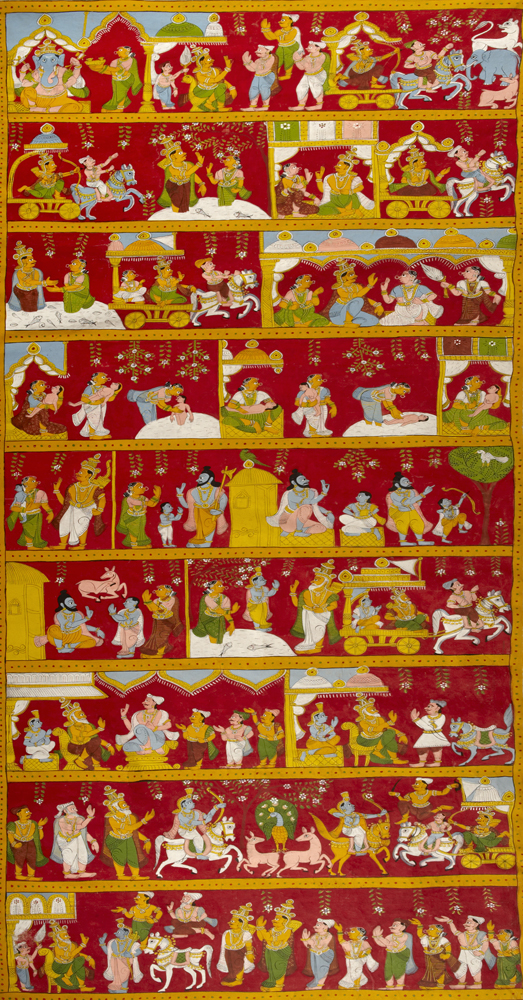
Painted wall hanging on canvas depicting scenes from the life of Bhishma, known earler in his life as Gangeya, then Devavrata.The ground is divided into nine horizontal registers, all but the top one and bottom two divided into two. Each section shows a scene from the narrative. The top register shows King Shantanu. In the second register he meets Ganga, the river goddess and asks her to marry him. She agrees on condition that Shantanu would never question her, no matter what her actions. If he ever breaks his promise, she will leave him for ever. They marry in the next register. Below this, Ganga drowns their children to break a curse on them. In the next register, when Ganga is about to drown their eighth child Gangeya, Shantanu protests. Below this, Ganga, knowing that Gangeya is destined to live a long life, decides not to drown the child, but leaves Shantanu, promising to bring the child back when he is grown up. Now named Devavrata, he learns to hunt under the tutelage of Parashurama. In the next register Devavrata, now grown up, meets his father again, and below this he takes his place in his father’s court of Hastinapura. An overjoyed populace welcome him and he is anointed the crown prince. Then a soldier comes in to tell the king of aggression on the borders by a neighbouring king. As a test of his prowess as a warrior he is sent alone to subdue the neighbouring king . The flora and fauna in the middle of this register depict the border between two countries. A battle ensues. Devavrata brings back the defeated king to his father. The king pays obeisance to King Shantanu, with Devavrata looking on. The whole country celebrates .
The bottom two registers appear to show Bhishma’s role in the battle of Kurukshetra.The figures are set against a red background.



